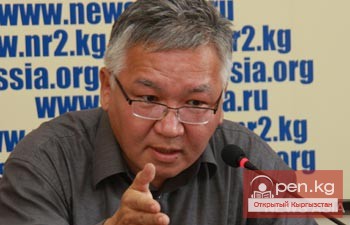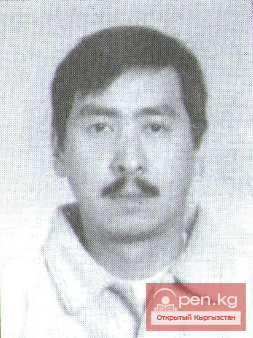
The invasion of illegal armed formations of the Islamic Movement of Uzbekistan into the southern part of the country in 1999, despite warnings from local authorities, came as a surprise not only to the political leadership of the country but also to the military. The armed forces were unprepared to combat illegal armed groups. One of the pieces of evidence for this assertion was the capture of several high-ranking representatives of the law enforcement agencies by militants. The main reasons for the situation that developed were:
• The failure of the General Staff to comply with the law "On Defense," which requires, among other things, the forecasting and assessment of military threats, preparation and maintenance of the armed forces in necessary readiness, and coordination of the activities of state authorities and local self-government bodies in the field of defense;
• Deficiencies in intelligence work. Military intelligence overlooked the fact that militants had been "settling" in the border areas with Tajikistan since 1996, as well as the fact of the infiltration from Tajikistan and the rampage of an armed gang of 11 people in the Chon-Alai district of the Osh region in September 1998;
• The political leadership of the country ignored the emerging military-political situation and failed to take measures to prevent military threats to national security. In 1996, a report on the situation in the Batken district and the possible infiltration of militants from outside into Kyrgyzstan was returned to the National Security Ministry, with military concerns dismissed as an exaggeration. The reports from the akim of the Batken district, A. Mamataliyev, and prosecutor R. Musaev, stating that "a year ago, militants roamed the Korgon gorge, held meetings, actively recruited local residents, and brandished weapons," did not serve as a signal for action either;
• The loss of interaction between law enforcement agencies. A report from a specially created group of intelligence and counterintelligence officers from the National Security Ministry was not submitted to the Ministry of Defense and other law enforcement agencies.
Armed conflicts in the south of the country demonstrated the weakness of the existing defense and security system, which was designed for combat operations against regular armies and was ineffective against small armed formations using guerrilla tactics. Furthermore, significant shortcomings were identified in the legislative support for the use of forces and means of the military security system.
According to the existing regulatory framework, the Armed Forces of the Kyrgyz Republic are intended for the armed defense of the sovereignty, independence, and territorial integrity of the Kyrgyz Republic against external aggression. Their involvement in tasks not related to this purpose is permitted only on the basis of law or by a resolution of the Jogorku Kenesh of the Kyrgyz Republic. Based on the provisions of the Law of the Kyrgyz Republic "On Defense," the use of the armed forces must be carried out based on an order upon the declaration of a state of war. None of this was done or could have been done. A state of war is the relationship between parties (states) that they enter into from the moment of the declaration of war or the actual commencement of hostilities. No state has waged war against Kyrgyzstan.
The army of Kyrgyzstan was formed on the basis of units and parts of the Soviet armed forces stationed on the territory of the republic. Its core consisted of former Soviet officers and warrant officers. Over the years of independence, the organizational and staffing structure of the units and parts has not undergone radical changes. The system of operational, combat, and mobilization training of troops has been preserved. Their tactics of action were practiced (and are still being practiced) according to Soviet combat regulations. The overwhelming majority of officers are trained in military educational institutions in Russia, studying its military science and experience, which do not take into account the conditions and capabilities of Kyrgyzstan, but which are then implemented in the practice of its army's actions. Soviet and Russian (its successor) military strategies provide for the use and, accordingly, the preparation of armed forces for war against regular armies. Army units and parts are not prepared to act against armed formations whose tactics differ fundamentally from those of regular troops. This was vividly demonstrated by the experience of the Russian army's special operation in Chechnya. As a result, troops on the battlefield act as they have been trained. In 2000, a system of checkpoints was deployed to combat the illegal armed formations of the Islamic Movement of Uzbekistan, which essentially represented a classic defense system—the main type of combat operations of the Soviet Army. But the militant groups are not an army. They do not set, nor can they set, as their goal the destruction of the enemy, the capture and retention of territories, and therefore will not break through the defensive line of Kyrgyz troops. The armed forces of the Kyrgyz Republic were unprepared to fight irregular formations.














































